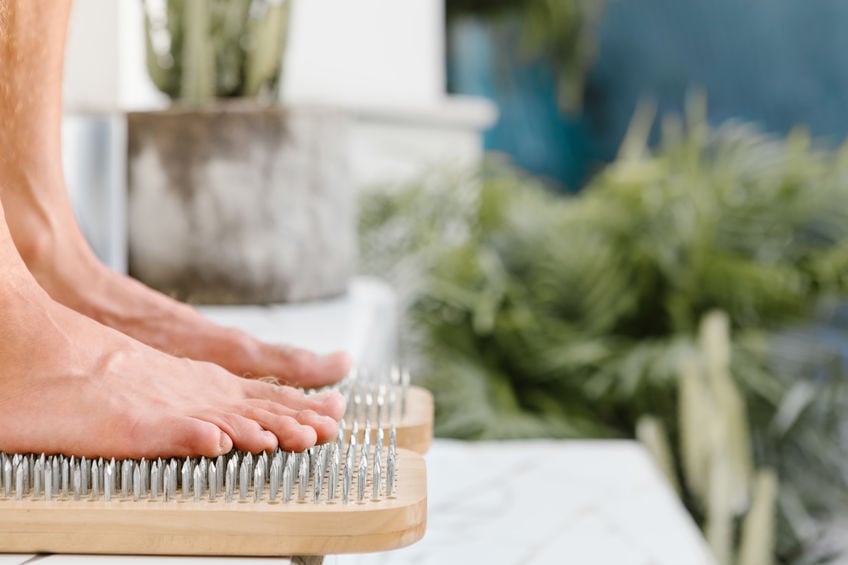Bummed Out About A Bunion?
If there’s a bump developing on the outside of the big toe, that could be the beginnings of a bunion. Bunions are growths that happen at the MTP joint of the big toe. The bunion develops if the big toe is forced towards the other toes. Over time, the big toe shifts inwards and creates the bump at the big toe joint. Bunions can become severe to the point where the big toe overlaps the second toe. Depending on the severity of the bunion, the only option to repair the condition might be a bunionectomy and osteotomy.

Bunions are more than meets the eye
A big toe bent inwards with a hard growth at the joint sounds unsightly. But there are more severe consequences than cosmetic appearance. Bunions can cause acute pain that can affect gait and prevent walking for long distances. Persons with bunions also face swelling, redness, and difficulty moving the big toe. While researchers have not been able to pin down the real cause of bunions, many believe the condition is inherited. In most examples, ill-fitting shoes worn over long periods can speed up the process.
Turning to bunionectomy surgery
Bunion treatment varies based on the severity of the growth. Common treatment options include ice, medication, and special inserts to keep the natural shape of the foot. If non-surgical treatment fails, the doctor will recommend surgery. Once agreed, the surgeon will perform a bunionectomy. Bunionectomies are minimally invasive procedures, meaning small incisions are used as opposed to the longer ones in traditional open surgery. This means a faster procedure and a shorter recovery. To complete the operation, the surgeon makes small incisions to insert tools to access the bunion. The surgeon then removes the bursa and other growth at the joint before realigning the big toe.
Cutting it down to size with osteotomy
In some cases, a bone spur develops in the space left by the big toe. For severe cases like these, the surgeon may decide an osteotomy is the best course of action. Osteotomies aren’t limited to bunions. The process involves removing a bit of bone to realign or shorten a joint. The surgeon will remove some of the metatarsal bone. Removing the bone allows the surgeon to reposition the big toe. Screws then keep the shortened bone in place. The surgeon will also reduce or lengthen surrounding tendons and ligaments. There are many cases where the surgeon will perform both bunionectomy and osteotomy to correct the issue.
Get the best treatment for bunions today
Bunions are common, with 36% of persons forming the growth by age 65. Without surgery, some bunions can get worse. In the past, persons with bunions would avoid open surgery, which had a long recovery and large scars. Now minimally invasive procedures make bunion correction a smooth process. A doctor will perform surgery if the bunion is not responding to non-surgical options. Speak with a doctor or podiatrist today.
Can Lower Back Pain Return After Spinal Surgery? 3 Lifestyle Changes To Get The Most Out Of Fusion
Minnesota Valley Valley Center2024-04-02T14:49:38-05:00April 15th, 2024|
Spinal surgery is an excellent solution for lower back pain, but symptoms can return. With lifestyle changes, patients can get the most out of fusion.
A New Lease On Life: Exploring How Robotic Total Joint Replacement Can Get You Active Again
Minnesota Valley Valley Center2024-03-24T17:38:47-05:00March 29th, 2024|
Robotic total joint replacement uses a robotic arm to replace the joint. This innovative approach allows a quick return to activities.
Restoring Dexterity: How Outpatient Carpal Tunnel Surgery Can Change Your Life
Minnesota Valley Valley Center2024-03-24T17:38:37-05:00March 15th, 2024|
After months of wrist and hand pain, carpal tunnel surgery may be needed. With outpatient options, restored dexterity with less pain and discomfort is possible.
More Articles from MVSC
January 5, 2023
Sesamoid foot injuries are painful but respond to conservative treatment. If these techniques fail, a sesamoidectomy can provide relief.
June 25, 2021
Conditions like bunions or hallux rigidus affect the big toe. Here’s how to tell the difference and to determine if foot surgery is required.
May 12, 2021
A hammertoe is unable to extend, causing unbearable pain. There are surgical treatment options, but is foot surgery the best move?
February 10, 2021
Runners are prone to many types of injuries, including sesamoiditis. Consider these reasons to choose a sesamoidectomy.










